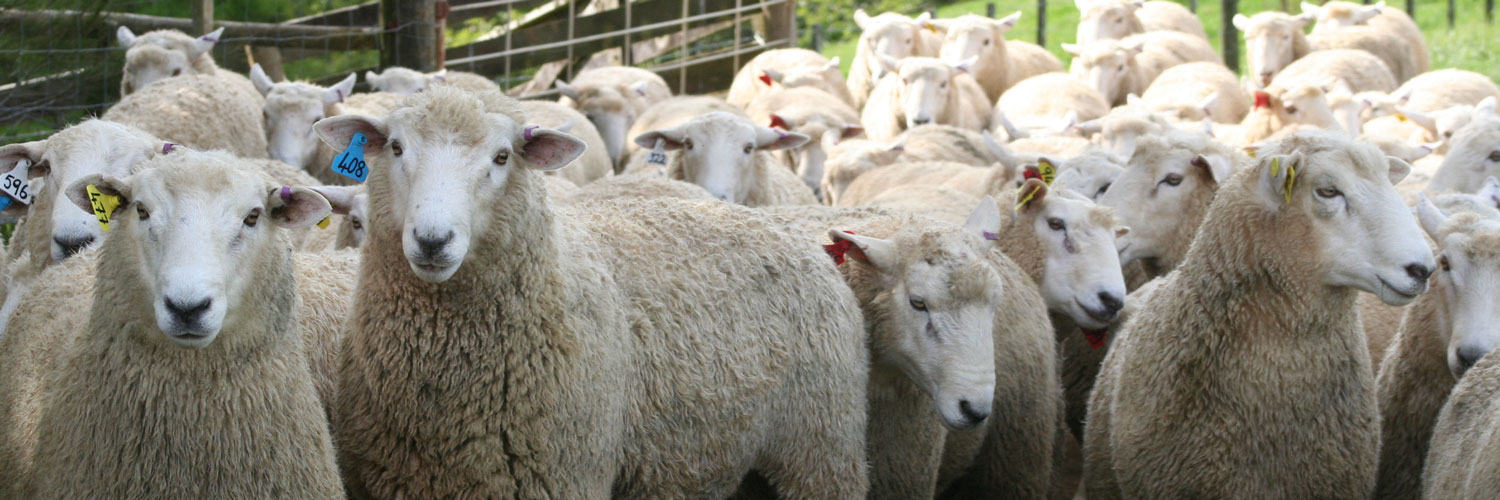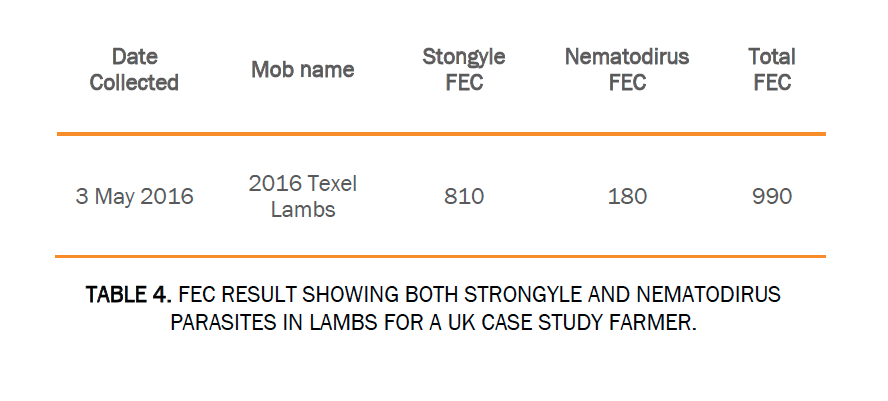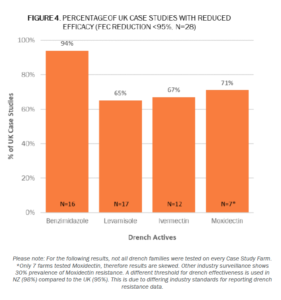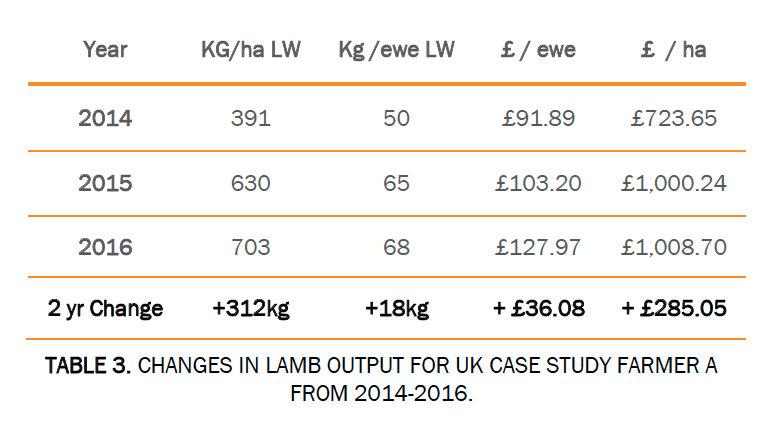
The Science
FECPAKG2 DESCRIPTION
FECPAKG2 is a complete on-farm or veterinary clinic based parasite assessment tool (Faecal Egg Count, FEC). FECPAKG2 generates results quickly so informed parasite management decisions can be made on-farm. The platform is comprised of equipment for preparing a faecal sample, a micro imaging unit (Micro-I) and software to enable the processing and communication of sample images and sample related data to the internet. The sample images are analysed online by a skilled technician. When completed, the results are emailed simultaneously to the Farmer, Vet or Advisor.
PLATFORM FEATURES
- Simple Faecal Egg Count (FEC) processing on-farm – no microscope required
- Samples do not have to leave the property (submitted online)
- Prompt FEC results and support via email
- Online access to all FEC information via a user portal
- No special technical skills or knowledge needed
- Easy to use, fully auditable, centralised FEC information reporting and sharing options
- Automated animal health alerts and testing reminders
PROJECT FINDINGS OVERVIEW
The Sainsbury’s FECPAKG2 Project illustrated that most farmers are underestimating the impact of parasites and drench resistance on their farming enterprise. Joining the Project led to a better understanding for participants and more confidence that they had an effective parasite control strategy in place. Once Case Study Farmers had adopted the new FECPAKG2 technology into their regular routines they found it an essential tool in achieving performance goals which was simple to use. After becoming involved in the Project many participants believed that better parasite control on their farms had led to improved flock performance.
Most Case Study Farmers reduced their drench use, some by up to 50% in their lambs. This reduction in drench use associated with using the FECPAKG2 technology, is an important finding in light of the current pressure on the lamb supply chain to reduce drench use. The reduced use of drench also lead to significant savings in labour and costs for farmers. In addition, many participants changed the timing of drenches to become more effective. Reducing drench use is also a vital step towards slowing the development of drench resistance on farms. The cost of on-farm drench resistance is significant, using data collected in this Project, and referring to various previous studies by other researchers in this field, the cost of using an ineffective drench for an average NZ farmer has been estimated at up to $74,974 annually and for the average UK farmer £12,037. Estimates of the cost of undetected drench resistance to the wider UK Sainsbury’s Supplier Group is £8,311,563 annually. While for the Sainsbury’s NZ Supplier Group, the cost is estimated at $3,883,654 annually. The majority of Case Study Farmers were aware of drench resistance and very few of the Project participants were confident that all drenches were working effectively on their properties. However, an alarming 37% of the NZ Case Study Farmers who took advantage of the drench resistance tests, and 84% of UK Case Study Farmers who did the drench checks offered through the Project, were still found to be regularly using an ineffective drench. These findings demonstrate the large increase in profitability possible across the Supplier Group if every farmer was aware of their drench resistance status. This also illustrates the value leakage that exists in the current supply chain.
1. OPPORTUNITIES FOR THE WIDER SAINSBURY’S PRODUCTION GROUP
The findings of this study can be extrapolated to demonstrate the potential benefit of the adoption of FECPAKG2 across the wider Sainsbury’s Producer Group.
From a survey of 717 Sainsbury’s UK Producers who weren’t involved in the Project, only 14% of farmers carried out 4 or more faecal egg counts per year (only 4% did 12 or more), yet 52% believed that regular faecal egg counting can help improve lamb growth rates (Source: SLDG Flock Health Survey 15/16, Sainsbury’s). When the same question was asked of the 30 Case Study Farmers (those who had successfully adopted regular FEC using FECPAKG2), 97% of them agreed that regular faecal egg counting helps improve lamb growth rates. This suggests that facilitating the uptake of technology such as FECPAKG2 onto farms to enable farmers to easily do regular faecal egg counting should translate into improved lamb growth rates and productivity. This will reduce drench use and ensure appropriate drench products are being used across the wider Sainsbury’s Production Group.
Most Case Study Farmers (79.2%) in the Project changed their drench usage, leading to savings in time and cost for 68.5% of them, and perhaps more importantly, reduced drench use overall, which will slow the development of drench resistance. The reduced use of drench on-farm, and slowing the development of drench resistance are both significant factors which are of considerable importance to the meat industry where there is increased scrutiny on drench usage in the lamb supply chain.
2. DRENCH RESISTANCE – A WIDESPREAD PROBLEM
Drench resistance is widespread and affects most farmers, but without testing most farmers are unaware of this, and are unwittingly applying treatments that are not effective. This will be negatively affecting stock performance and profitability.
Drench resistance data gathered in this study showed that 37% of NZ Case Study Farmers who did a drench resistance test as part of this study, were regularly using a drench which was <95% effective. Various studies have been done investigating the cost of resistance (Appendix 4). Using information from these various studies, the average weight loss per lamb caused by using an ineffective drench has been estimated at 3.13kg dead weight.

The Beef and Lamb NZ average lamb meat price per kg in the 2016-17 price outlook is NZ$4.85. Therefore, the potential estimated monetary loss due to using an ineffective drench per lamb is $15.18. The average NZ farmer in this study sells 4,939 lambs (Source: Carbon Footprint Assessment, 2015 Sainsbury’s), a loss of $15.18 in performance for each lamb equates to an estimated potential annual loss of $74,974 per farm per annum for 37% of NZ farmer suppliers.
Similarly, 84% of the participating UK Case Study Farmers were using ineffective drenches. The average UK farmer in the Lamb Development Group sells 1,009 lambs (Source: Carbon Footprint Assessment, 2015 Sainsbury’s), using an average price of £3.81/kg (AHDB Beef and Lamb dead weight March sheep prices) this equates to £11.93 potential estimated loss per lamb due to using an ineffective drench in the UK, and a potential annual loss of £12,037. When these findings are extrapolated to the wider Sainsbury’s Producer Group it demonstrates the large increase in profitability which is possible by ensuring effective drenches are used by farmers.
Only 16% of NZ and UK Case Study Farmers believe that all drenches work effectively on their property (Figure 1).
NZ RESISTANCE RESULTS
Figure 2 and Figure 3 report the drench resistance results using two reporting scenarios. Figure 2 presents the results using a drench efficacy threshold of >98%. Figure 3 presents the same results, using a >95% efficacy threshold. The difference in the graphs indicate there are a number of drench actives effective in the 95% to 98% range i.e. these drench actives are showing the early signs of a drop in efficacy due to drench resistance.
Of the NZ Case Study Farmers in the Project, 59% plan to keep on top of their drench status and use FECPAKG2for regular drench checks.
[We are now] not wasting money on drenches that don’t work.
Mark and Wendy Rolston NZ
We were not surprised, but pleased to learn our drench status. There is so much media and it is easy to blame drench resistance for problems. Farmers can be afraid to know their status but they might be pleasantly surprised. Knowledge is power.
Dawn Sangster NZ
For assessment methodologies, see Appendix 5.
UK RESISTANCE RESULTS
Figure 4 summarises the results for the UK Drench Check assessments undertaken within the Project. These results for the first 3 groups mirror a larger and more robust study previously carried out by Techion UK Ltd (HCC’s WAARD Project). However, the Moxidectin result in this Project may be overrepresented as only 7 farms were tested, whereas the WAARD Project showed a lesser 30% prevalence of Moxidectin resistance. Note: These UK Project results are indicative only, as they were generated using a simpler drench test methodology.
The WAARD Project tested all 4 drenches on each farm using a full DrenchSmart FECRT (Faecal Egg Count Reduction Test). Results from 30 farms tested in the summer of 2015 showed that 60% of farms had resistance to 3 or 4 of the 4 drenches. For full results on the WAARD Project see HCC’s website via this link: http://hccmpw.org.uk/farming/projects/anthelmintic_resistance_project/
Now we are aware of the farms resistance status we are avoiding wormers that don’t work. We are also minimising use of wormers where resistance is suspected or starting.
Rhun Williams UK
3. PROJECT FARMERS SURPRISED BY PARASITE BURDENS
Parasite burdens, and anthelmintic drench resistance were larger problems on-farm than most Case Study Farmers realised.
We identified that worms are a big problem on the farm. Because no major clinical signs were observed and [due to] our hill environment we assumed worms weren’t much of an issue before, so it was a surprise to us. There is still work to do on improving worm control and achieving better performance.
R Lloyd Williams UK
I have extended drenches considerably in the autumn. Now that I know what drenches not to use. Using adult stock to clean pasture more now.
Barry Roughan NZ
Project members who tested store lambs or hoggets through the late autumn and winter months were often surprised by unexpected high parasite burdens. Most expect parasites to be a problem during spring and summer, but diminishing in the winter. Figure 5 demonstrates that the opposite was true for one UK Case Study Farmer with lambs born in 2015,with significantly higher average FEC recorded in winter.
4. FARMERS REDUCE DRENCH USE
Most Case Study Farms reduced drench usage, with some decreasing drenching by as much as 50% for lambs and 80% in ewes.
In the past I drenched based on a hunch after 4-5 weeks. Now drenching is based on facts.
Warren Leslie NZ
Warren Leslie had previously drenched his lambs monthly, using a hunch and limited use of FEC information. Since using FECPAKG2, Warren has reduced his drench usage for his lambs by half and extended his drench intervals up to 8-10 weeks.
One UK Case Study Farmer who seldom drenched before becoming involved in the Project, assuming they did not have a problem, saw an increase in their drench usage. The new FEC information has resulted in an increase in drench usage, but an improvement in animal performance.
Of the Case Study Farmers, 73% reported saving money by reducing drench usage, while 69% reported saving money by reducing labour costs related to drenching stock.
Table 2 shows some the changes in their farming practice by UK Case Study Farmers.

5. FARMERS BELIEVE FEC CONTRIBUTED TO IMPROVED FLOCK PERFORMANCE
As with most diseases, the monitoring, detection, and treatment of an identified parasite burden will often result in a dramatic animal performance lift, as was observed in the Project. However, monitoring FEC will have no performance impact in animals that are grazing clean pasture, are well fed and have no other health issues.
On many Case Study Farms, lamb and flock performance improved significantly over the course of the Project. Although improved performance may be due to many factors, most of the participant Case Study Farmers believed that better parasitecontrol played a part and in two cases this wasdeemed as the major influence.
Animal health, including weight gain, and overall wellbeing has improved.
Mark and Wendy Rolston NZ
No Case Study Farms reported a reduction in performance due to altering parasite control.
Lamb output has improved dramatically from 2014 to 2016 on one UK Case Study Farm (Table 3). Although many factors have influenced this, improved parasite control has certainly played its part and was also on the back of less drench used. Analysis of slaughter data in another UK Case Study Farm showed that on average lambs finished between 2 and 3 weeks quicker in the last 2 years than they had done previously(Source: Carbon Footprint Assessment, 2015 Sainsbury’s).
Of the NZ and UK Case Study Farms in the Project, 97% believe that regular faecal egg counting can help improve lamb growth rates (Figure 6), and 91% believe that monitoring lamb growth rates is beneficial to flock performance.
We have definitely seen a marked improvement in lambs –and sure it’s down to better control of worms as only main thing we have changed. Similar weights but finished a lot faster.
UK Case Study Farmer F
6. CASE STUDY FARMERS CHANGE DRENCH BEHAVIOUR
The majority of Project Farmers made changes to drench timing and the drench actives used. This highlights that a parasite treatment regime based on schedules and clinical signs can result in unnecessary and ill-timed drench treatments which waste farmer time, reduce profitability and result in unnecessary drench use. Over use of drenches is a contributing factor in the development of drench resistance. Of the Case Study Farmers involved in the Project, 79% changed their drench behaviour. In addition, 69% of Case Study Farmers said time and money has been saved in relation to animal performance. Several UK Case Study Farmers changed the timing of their ewe spring drench with some only treating a certain group of ewes.
This year I will monitor the lambs throughout the season and drench accordingly.
Andrew Dickson NZ
[I am] using less, more strategically, and [with] better timing of my drenching.
Donald Morrison NZ
EXAMPLE: UK CASE STUDY FARMER D
- Historically all ewes were treated at 5-6 weeks post lambing, the same time as the first treatment for lambs (first week of May)
- Using FECPAKG2, weekly FEC sampling at pre-lambing identified significant parasite burdens (Figure 7). This was unexpected because the ewes are winter housed
- The timing of ewe drenching was changed to a treatment at lambing turnout
- Significant contamination of spring pastures was now avoided
- A test on a small group of untreated ewes showed they had regained their immunity by 5-6 weeks’ post lambing which meant a treatment at that point was unnecessary
USING MORE APPROPRIATE DRENCHES

In the UK, the first treatment given to lambs in the spring is often Benzimidazole, under advice from industry experts and Veterinarians. This is because the main target at this time of year is the Nematodirus parasite species. Benzimidazole resistance is widespread to Strongyle parasites but it is still effective against Nematodirus on most farms. Table 4 shows a FEC result from one UK Case Study Farmer for un-drenched lambs in the spring. The Strongyle FEC is higher than Nematodirus, therefore Benzimidazole would not be effective due to the farm having resistance. The additional information the Farmer had from their involvement in this Project (FEC Results),meant they could choose a more appropriate drench.
For UK Case Study Farmers, high Strongyle counts were unexpectedly found in 44% of lamb tests in early spring (before 31st May), this suggests that many farmers may be using an inappropriate drench product at that time of year.
7. BEING INFORMED IS THE KEY FOR PROJECT FARMERS
Case Study Farmers reported a much-improved understanding of the parasite issues on their farm. Across the Project, 97% believed that regular faecal egg counting can help them improve growth rate, and flock performance.
Many Case Study Farmers admitted that cost was a big barrier for testing the drench status on their farm. The reduced-price offer associated with the Sainsbury’s FECPAKG2 Project was an incentive for many farmers who had deferred drench testing, to finally do it. Many Case Study Farmers were surprised by their results.
I had not done a drench test till Sainsbury’s offered it. I was pleasantly surprised drenches are still working. It gave me a lot of confidence in the drenches that I am using. Made me aware to use them carefully. The Sainsbury’s FECPAKG2 Project made us aware of good parasite management to make sure you are not going in the wrong direction.
Graeme Black NZ
Farmer education is key.
Andrew Dickson NZ
Before the Project, wewere unaware that resistance was such an issue and we now have a much better understanding of the worm issues on-farm. It’s been well worthwhile being part of the Project.
UK Case Study Farmer F
We have not fully utilised the system yet. But a lot has already changed in terms of worm control policy just from what we have learnt as being part of the Project.
UK Case Study Farmer K
8. FECPAKG2 – A VALUABLE ON-FARM TOOL
A significant number of NZ and UK Case Study Farmers used FECPAKG2on a regular basis with 32% submitting 20 or more samples per year.
Case Study Farmers who have changed and adopted the technology have found it a very valuable tool that they wouldn’t do without in the future.
I’m impressed with the service. It has evolved hugely within the last year. The support is there. I feel privileged to be involved with a group of pioneers. I am confident with FECPAKG2and will be using it regularly.
Mark Adams NZ
Been a useful kit and can see there is definitely room for it on the farm, just need to make more use of it.
UK Case Study Farmer N
There has been a clear financial benefit to using the kit, as well as an improvement of understanding and thus control of worm burdens on-farm.
Sion Williams UK
Case Study Farmers who are adopting a policy of driving flock efficiency and employing sustainable farming practices, including better utilisation of forage and decreasing reliance on purchased feed, have found monitoring parasites an essential tool in achieving these goals.
FECPAKG2forms part of a more informed decision-making process for sustainable parasitecontrol.
9. TECHNOLOGY ADOPTION CHALLENGES
Encouraging farmers to adopt a change in behaviour remains challenging and was a significant obstacle in the Project. A large proportion of farmers traditionally rely on routine drenching because they are busy and think that is an easier approach, some are also still being advised by their Vets to drench routinely. Time was one of the main reasons identified by Case Study Farmers for not doing drench resistance testing (22%) or faecal egg counting(44%). This study has shown that routine drenching is often inadvisable, and that drenching only when required can save both time and money. Many farmers also believe they can tell “visually”, when their animals need to be drenched, however once the effect of parasitism is visible there have already been production losses which cannot be retrieved. This was demonstrated by the fact that 97% of NZ and UK Case Study Farmers involved in the study believe that doing regular faecal egg counting helps to improve lamb growth rates.
Adopting a new technology can be intimidating, especially for the older generation, once the Case Study Farmers on this Project understood what was required, the majority found FECPAKG2 was easier than they expected and they were happy with the support they received. The software associated with FECPAKG2 enables farmers to record the details of animal health treatments and key events. Farmers and their Vets can share results, set up notifications and reminders for animal health testing and treatments. These features give farmers the ability to painlessly optimise parasite management on their farm and to involve their Vets in their animal health plan using shared information.
Farmers often select the drench they use from the products promoted by suppliers without using knowledge of what drenches work properly on their farm. It is essential that farmers understand which drenches are working on their property both for their productivity and to slow the further development of drench resistance. For many Case Study Farmers, the cost of doing a drench resistance test was a barrier and the reduced-price offer associated through the Project was an incentive for them to complete a long overdue task. Before joining the Sainsbury’s FECPAKG2 Project, collectively 91% of Case Study Farmers drenched their lambs based on a calendar schedule. Since joining the Sainsbury’s FECPAKG2 Project, 79% of Case Study Farmers have changed their drench timing and drenching behaviour through FEC monitoring and treating only when necessary.
I did learn a lot about our stock and when to drench over the years. I have got a bit lazy about it, so I think the new way is going to be a lot better with FECPAKG2 staff keeping in touch with you.
Andrew Hall NZ
[It has been] challenging at times due to my limited knowledge of computers. The support I have got from Techion has been outstanding, the more I use it the better I get at it.
Warren Leslie NZ







